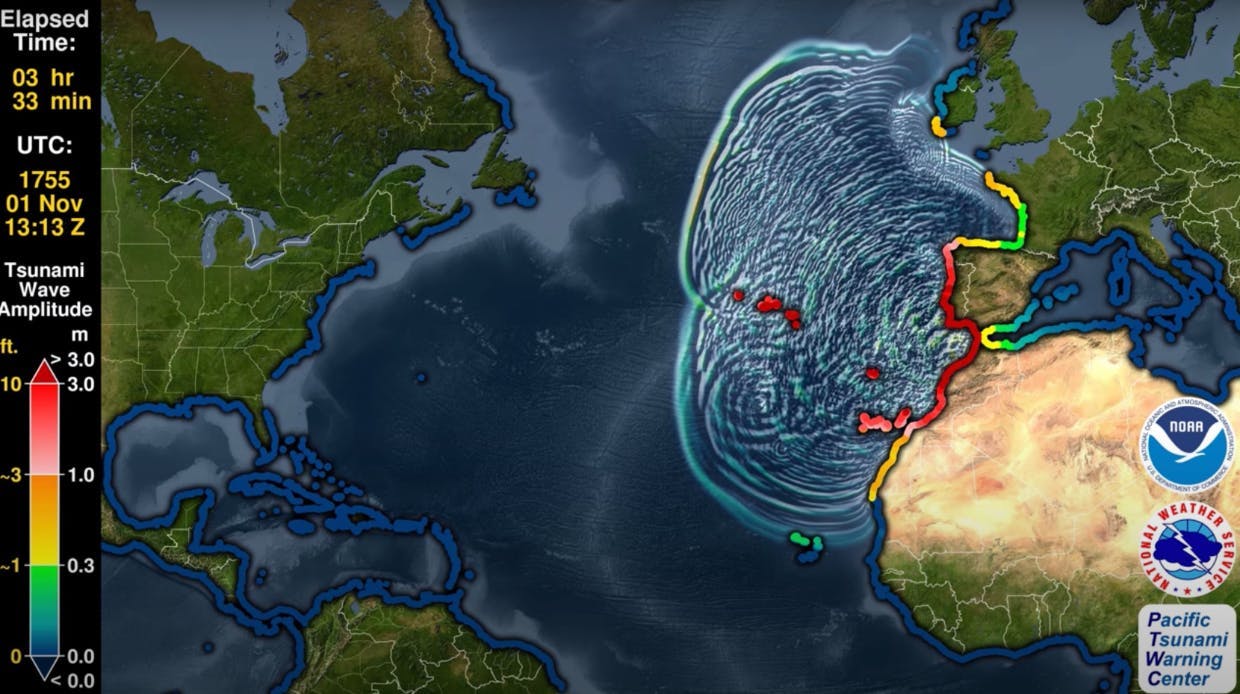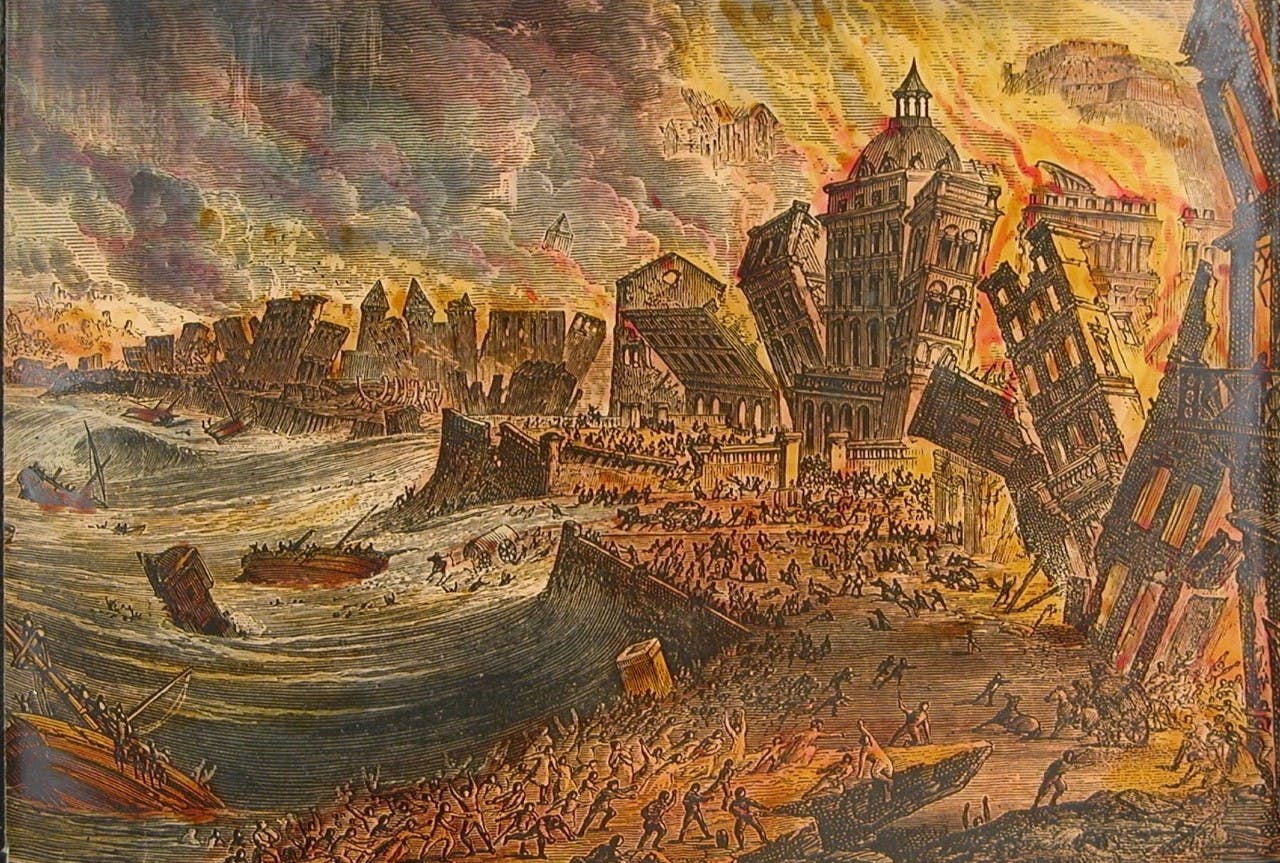Earth, water and fire: a tragedy never comes alone
Tsunamis are rare occurrences in Europe, and this fact makes the 1755 tsunami an even more extraordinary event, since it crossed the entire Atlantic. As a transoceanic tsunami, it can be compared to the 2004 Sumatra tsunami and other tsunamis that cross the Pacific. Tsunamis with these characteristics are usually generated by large faults with very large movements. It is believed that a fault like that broke in 1755. According to the studies developed on this field, the fault that broke and deformed the ocean floor in 1755 was a fault 100km long and 50km wide. This same fault would have affected the ocean floor, it is estimated, in about 20m high, thus causing a transoceanic tsunami.
The records that we can access today corroborate this analysis, with reports on the impact of the tsunami in England, France, Brazil, Canada and the Caribbean where, for example, 3m waves were observed. The biggest impact was indeed in Portugal, but also in Morocco and southern Spain. Historical reports show that in Cadiz the waves would have reached more than 10m. As for Mainland Portugal, 10 to 15m waves would have reached Sagres area and in Lisbon it is estimated that they have reached 5m.
One of the reports that can be studied today is from an English sea captain that was in Lisbon on the day of Earthquake. Bugio Fort, still visible today at the mouth of the Tagus River, was surrounded by the tsunami waters and the sea captain, on his boat, observed the following events: “… The Castle of Bugio was so far overcome by the water, that the garrison fired several guns as signals for help, and were obliged to retire to the upper part of the tower. By my best judgment, the water rose in five minutes about 16 feet (approximately 5 meters), and at two in the afternoon the tide returned to its natural course”.
It is known today that the waves of a tsunami travel on high seas at the speed of commercial airplanes, at about 800km per hour, but that speed is much slower than the speed of seismic waves, which travel at 8/9/10km per second. Thus, it is known that there is a time between the arrival of seismic waves and the waves of a tsunami. In 1755, the estimated arrival time of the tsunami waves at Bugio Fort is 30 minutes. As for Lisbon centre, since the water depth is much smaller, the waves propagated much slower, so it is estimated that it took perhaps 70 or 90 minutes for the tsunami waves to reach the city.

